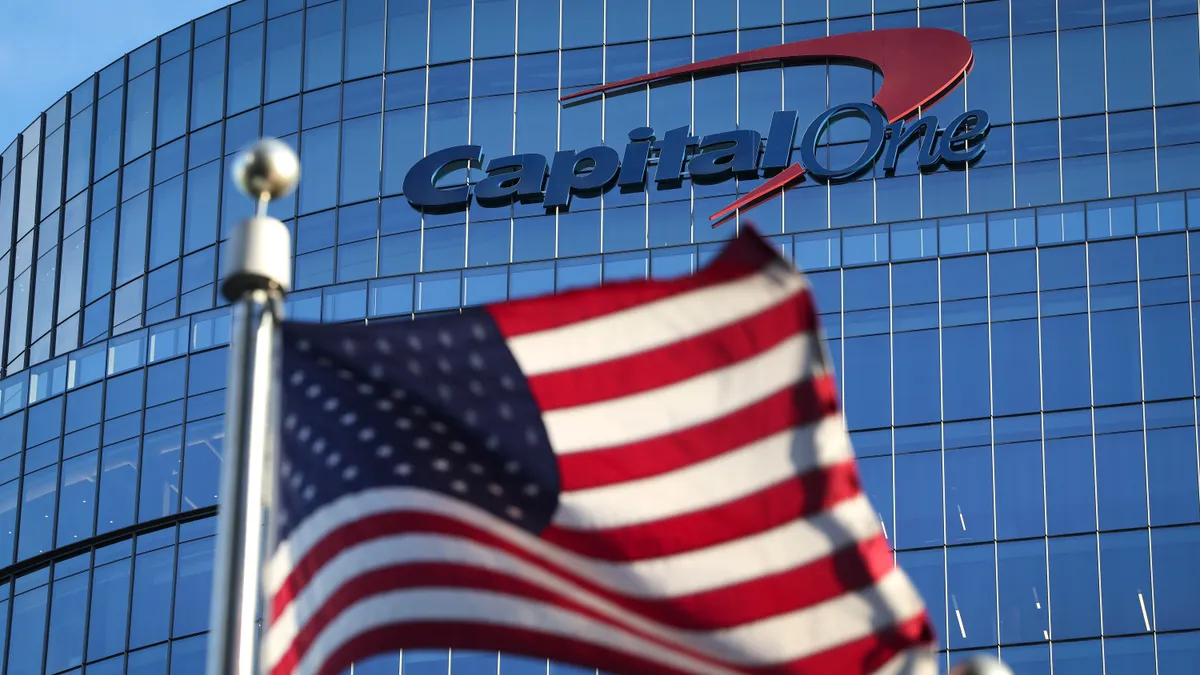Once its acquisition of Discover Financial Services is complete, Capital One aims to position the card network’s brand as more upmarket and grow its international acceptance network.
As the McLean, Virginia-based bank works to increase awareness of Discover’s acceptance domestically and expand its acceptance abroad, “we’ll probably also make some moves to sort of pull the Discover brand upmarket a little bit,” said Jeff Norris, SVP of finance at Capital One, during an appearance at the RBC Capital Markets Financial Institutions Conference Tuesday.
“It’s not a down-market brand by any stretch of the imagination, but we can sort of gradually position it as a little bit more upmarket, while we're driving the message of ubiquitous acceptance,” Norris said.
Capital One, which last month said it’s acquiring Discover in an all-stock deal valued at $35.3 billion, plans to move the entirety of its debit purchase volume to the Riverwoods, Illinois-based company’s payment network, largely within the first three years after the deal closes, Norris said.
The company expects the closing to occur at the end of this year or early next, although some attorneys have speculated regulatory approval could take longer, if it happens at all.
Capital One executives have repeatedly noted the unique opportunity of owning a card network. During an investor conference appearance last week, Capital One CEO Richard Fairbank noted much of the appeal of the acquisition “is to be able to add a whole bunch more scale to the network,” and to allow the company to make headway that it couldn’t in the past.
As an issuer-network, Discover has a particularly unique position in that it’s exempt from the Durbin Amendment, which caps debit card interchange. The card network also appealed to JPMorgan Chase, which pursued Discover prior to Capital One, the Financial Times reported Thursday, citing unnamed sources.
Capital One will begin moving its debit volume — which currently runs on Mastercard’s rails — to Discover’s network in the second half of 2025, Norris said. By the end of 2027, Capital One expects to have moved substantially all of that volume. Discover’s debit network, with Pulse PIN debit and Discover signature debit, “is the majority of the $1.2 billion in network synergies that we’ve talked about,” Norris said.
However, there’s more work to do on the credit side, Norris acknowledged. Discover, the fourth-largest network, is not even half the size of the third-largest competitor, American Express, he noted.
Capital One also expects to move a “relatively small portion” of its credit volume to Discover’s network in the first three years. As it does so, the company plans to “lean into investing” in the network, especially in the U.S., Norris said.
“There’s a perception gap, between the actual acceptance of Discover, which is pretty much on par with Visa and Mastercard, domestically, and the perceived acceptance on the part of people who aren’t Discover cardholders,” Norris said.
Capital One will ultimately look to shift more of its credit volume, but that endeavor is likely to take more than three years and will happen in “small steps,” he said.
Beyond perception, Capital One aims to “fix” the network’s international acceptance, “which is not quite where it needs to be, for the entirety of our card business today,” Norris said.
Capital One intends to add spending volume to Discover’s network in segments, after increasing the network’s capability and brand perception, as well as its international acceptance, Norris said.
Norris declined to identify a potential timeline for those efforts, stressing that Capital One will want to “be really sure-footed” and thoughtful in its approach, to minimize the impact of switching networks on its customers.
Before shifting debit or credit volume, Capital One plans to do testing and analytics work to identify customers least likely to be unhappy about moving, and move them first, Norris said.











